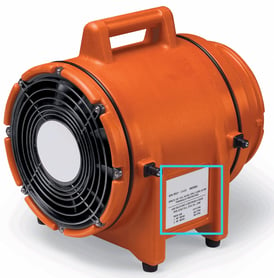 For industrial facilities grappling with compliance gaps, limited rescue resources, or the need for specialized training, the solution might be closer than you think. Similarly, for municipal fire departments considering partnerships with industrial sites, the opportunities for growth and enhanced community safety are profound. Relationships like these already exist, and they work.
For industrial facilities grappling with compliance gaps, limited rescue resources, or the need for specialized training, the solution might be closer than you think. Similarly, for municipal fire departments considering partnerships with industrial sites, the opportunities for growth and enhanced community safety are profound. Relationships like these already exist, and they work.
Take the Pittsboro (IN) Fire Department (PFD) and Steel Dynamics Incorporated (SDI) as an example. Over a decade ago, SDI approached PFD with a straightforward request: to serve as their confined space rescue service. What followed was the start of a collaboration that not only made SDI’s facility safer but also equipped PFD with skills and resources that continue to benefit the entire Pittsboro community.
"For industrial facilities grappling with compliance gaps, limited rescue resources, or the need for specialized training, the solution might be closer than you think."
When an industrial facility partners with a fire department, the advantages go both ways. For the facility, there’s access to professional rescuers who bring a level of expertise and readiness that is hard to match. Training exercises, site tours, and joint planning sessions ensure the team is prepared for emergencies specific to the plant. For example, at SDI, PFD responders have access to the site for training events, giving them valuable familiarity with its unique hazards. This preparation paid off during a recent incident, where PFD’s air monitoring equipment—purchased with SDI’s support—was critical in managing the situation.
On the fire department side, the benefits go beyond the walls of the industrial facility. Financial support from SDI allowed PFD to expand its technical rescue capabilities, benefiting the entire community. Training in confined space and high-angle rescue doesn’t just help on-site; these skills are invaluable when responding to emergencies across the coverage area, whether it’s a vehicle accident or a complex urban rescue.
"Financial support from SDI allowed PFD to expand its technical rescue capabilities, benefiting the entire community."
These crossover skills, developed through industrial partnerships, can transform a department’s overall rescue capability. As PFD Assistant Chief noted, “The relationship with SDI has made us a better resource for the town of Pittsboro and made SDI a safer place to work.” Collaboration strengthens community safety while addressing the specific needs of the facility.
For industrial leaders, the key is to take the first step. Reach out to your local fire departments and start the conversation. Many departments are enthusiastic about these opportunities, recognizing the chance to enhance their training and equipment resources. By identifying your facility’s specific risks—such as confined spaces, high-angle work, or hazardous materials—you can help responders be better prepared for emergencies that may occur.
Similarly, for fire departments, it’s worth taking the meeting. While there may be initial skepticism about partnering with private industry, these relationships often lead to invaluable investments in training and equipment. And these investments don’t stop at the plant gate; they benefit every call the department runs, from structure fires to search-and-rescue operations.
Ultimately, these partnerships break down silos between municipal response teams and industrial sites. They encourage communication, proactive planning, and mutual respect. When incidents happen—and they will—these relationships ensure that responders are equipped with the skills, knowledge, and resources to manage them effectively.
In the end, everyone wins: the industrial facility, the fire department, and, most importantly, the community. If you’re an industrial leader or a fire chief wondering if this kind of collaboration is worth it, the answer is clear. Take the first step. Reach out, take the meeting, and see what’s possible. The safety of your workplace, your responders, and your community could depend on it.
Learn More
Roco’s Confined Space Types Chart & Compliance Guide







 Compliance and Application
Compliance and Application




 We’re not talking about blowing a fuse here—this short circuit is all about airflow. Picture this: you set up your ventilation to push fresh air into a confined space, but instead of circulating throughout the area, the air takes a shortcut right out of the portal. The result? Only a fraction of the space is getting ventilated, potentially leaving atmospheric contaminants in the space or workers’ breathing zone.
We’re not talking about blowing a fuse here—this short circuit is all about airflow. Picture this: you set up your ventilation to push fresh air into a confined space, but instead of circulating throughout the area, the air takes a shortcut right out of the portal. The result? Only a fraction of the space is getting ventilated, potentially leaving atmospheric contaminants in the space or workers’ breathing zone. Recirculating air might be great for your car’s A/C, but in confined spaces, it can be a fatal mistake. If the air you’re pulling out of the space ends up getting sucked back in, you’re just circulating the same contaminated air over and over again. While the space may feel like it is being ventilated, the contaminates never get diluted out since they are being reintroduced back into the space with each air change.
Recirculating air might be great for your car’s A/C, but in confined spaces, it can be a fatal mistake. If the air you’re pulling out of the space ends up getting sucked back in, you’re just circulating the same contaminated air over and over again. While the space may feel like it is being ventilated, the contaminates never get diluted out since they are being reintroduced back into the space with each air change. CFM = Volume of space (ft3) X Air Changes Per Hour / 60 minutes
CFM = Volume of space (ft3) X Air Changes Per Hour / 60 minutes




